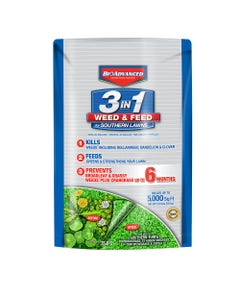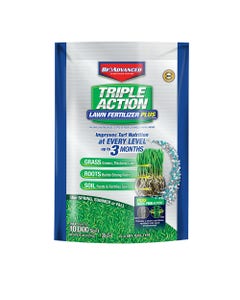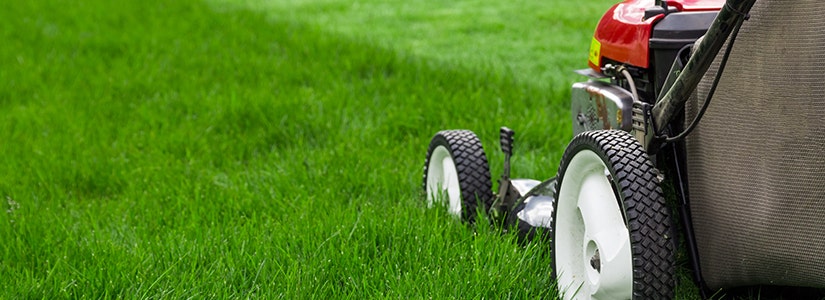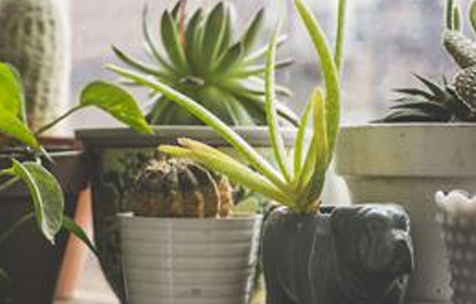

- Home
- Solution Center
- Learn
- Lawn and Landscape
- Summer Lawn Watering Guide: Steps To A Great Lawn
Summer Lawn Watering Guide: Steps To A Great Lawn
In most regions, maintaining a lush, green lawn through summer hinges on watering. Sharpen your irrigation skills and use our lawn watering guide to learn what you can do to prevent brown patches from cropping up in your yard.
How often should I water my lawn?
A very general rule of thumb is to provide lawns with 1-1.5 inches of water per week, from irrigation or rainfall. A good way to check moisture penetration is to probe the soil with a screwdriver or similar object. How often you water will vary based on where you live and what type of soil you have. In order to conserve water and give grass just what it needs, it'll help you to understand the factors that influence irrigation frequency.
Grass Type
Different grass types require different amounts of water. For example:
- A healthy lawn of Tall Fescue has a deep root system and the highest drought tolerance of cool-season turf types.
- Kentucky Bluegrass consistently goes dormant during drought, reviving when rainfall resumes.
- Warm-season grasses, such as Zoysiagrass, St. Augustinegrass, Bermudagrass, and Centipedegrass, thrive in warm conditions, developing deep root systems that make them better able to withstand drought. In general, warm-season grasses require 20% less water than cool-season types.
Soil Type
Different types of soil absorb and retain moisture differently.
| Soil Type | Water Absorption | How deeply 1 inch of water penetrates1 |
|---|---|---|
| Sandy | Absorbs water quickly; needs less water more frequently | 12 inches |
| Loam | Absorbs water evenly, without puddling or runoff | 7 inches |
| Clay | Absorbs water slowly; can cause runoff when water applied too quickly; holds water longer (slow to dry out) | 4-5 inches |
1 Healthy grass roots typically grow at least 6-8 inches deep.
Regionality
Different regions receive different amounts of rainfall and summer weather conditions, which influences irrigation needs. Grass needs the most water when heat, drought, low humidity, and high winds prevail. Learn to identify signs of drought and summer lawn stress.
Lawn Age
There's one other key when determining irrigation frequency. While all lawns need consistent moisture to remain green and healthy, newly-planted lawns are in a critical stage for the first year. Don't rely solely on rainfall to establish a healthy, deep root system – provide supplemental irrigation during the first year of growth.
Watering Without Waste
During the scorching hot months of summer, conservation is key when it comes to watering and lawn care. Here are a few tips to ensure that not a drop of water goes to waste when watering your lawn this summer.
Choose your system carefully. For small lawns, try a hose-end sprinkler. Use a timer of some sort (even an oven timer will work) to help you remember to turn it off. With in-ground irrigation systems, use low-volume, low-angle sprinklers with heads that suit the size of the area you're watering. Angle heads as low as possible to minimize evaporation. If you spot a fog or fine mist, system pressure is too high. Newer rotary nozzles (also called stream sprays or rotators) apply water slowly and evenly.
Watch the watering. Observe water distribution to ensure you're not watering hard surfaces (causing runoff) or creating puddling on the lawn (applying too much water too quickly for soil to absorb).
Tinker with timing. Add a smart timer that adjusts irrigation based on local weather conditions such as rainfall, temperature and even evapotranspiration rates. Water an hour or two before sunrise to minimize evaporation and take advantage of calmer winds. Time irrigation to avoid high water use hours in your household. Avoid night irrigation to prevent disease.
Fine-tune the duration. Measure how much water your system releases by evenly spacing six (or more) straight-sided containers (such as tuna fish or cat food cans) in the area you're watering. Run your irrigation system for 20 minutes. Measure the amount of water in individual cans, adding them and dividing by the number of cans to get an average. Multiply the average by three to determine how much water your system releases in an hour.
Shorten cycles. With clay soils, slopes, and other areas where water runs off quickly, use short watering cycles on separate days to minimize runoff.
Inspect the system. Two clues that valves need to be repaired or replaced are leaking sprinklers or water-filled valve boxes. Fix leaks or unclog heads according to the manufacturer's instructions.
Reset frequently. At least seasonally, reset your watering schedule. Check with your local water authority for recommended irrigation schedules based on records of average weather conditions.













